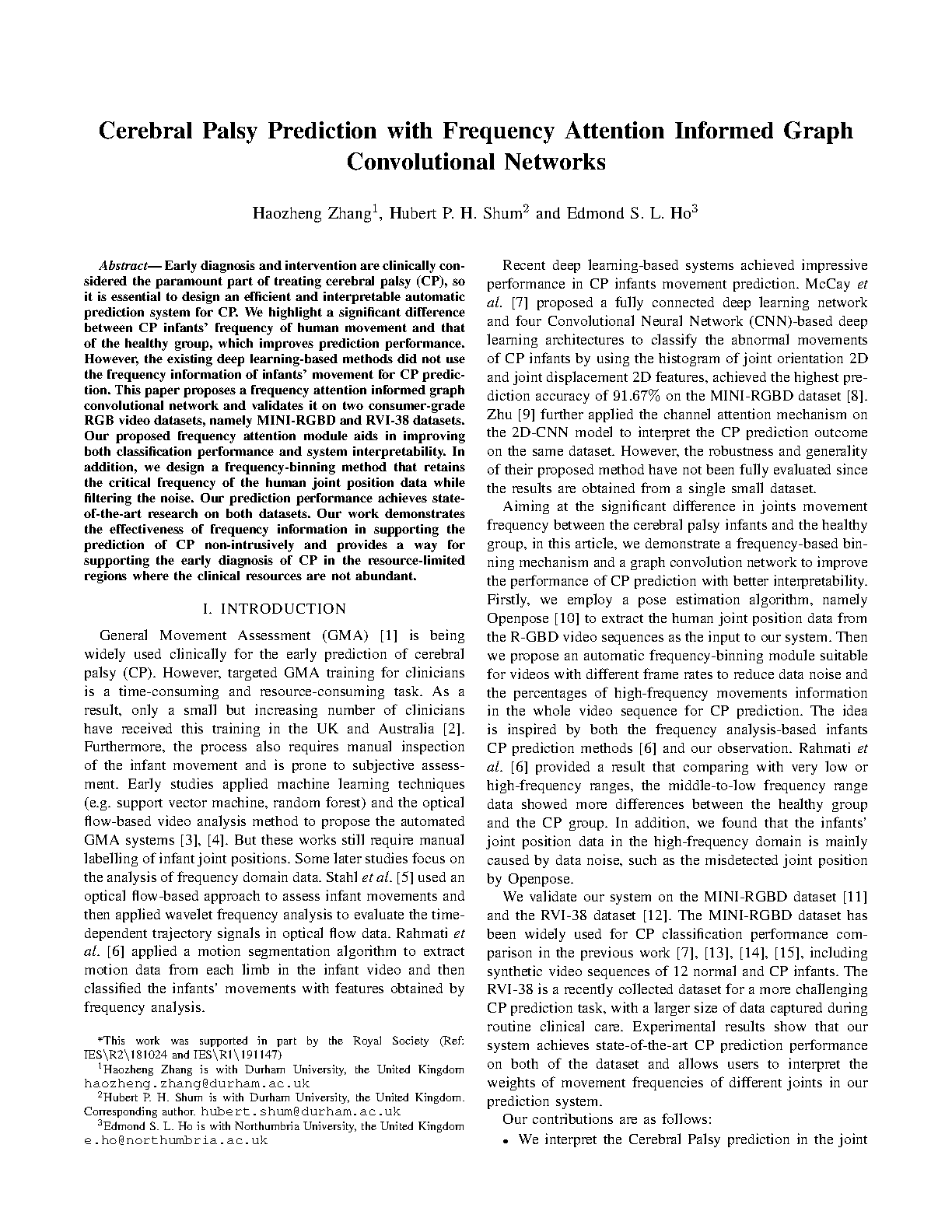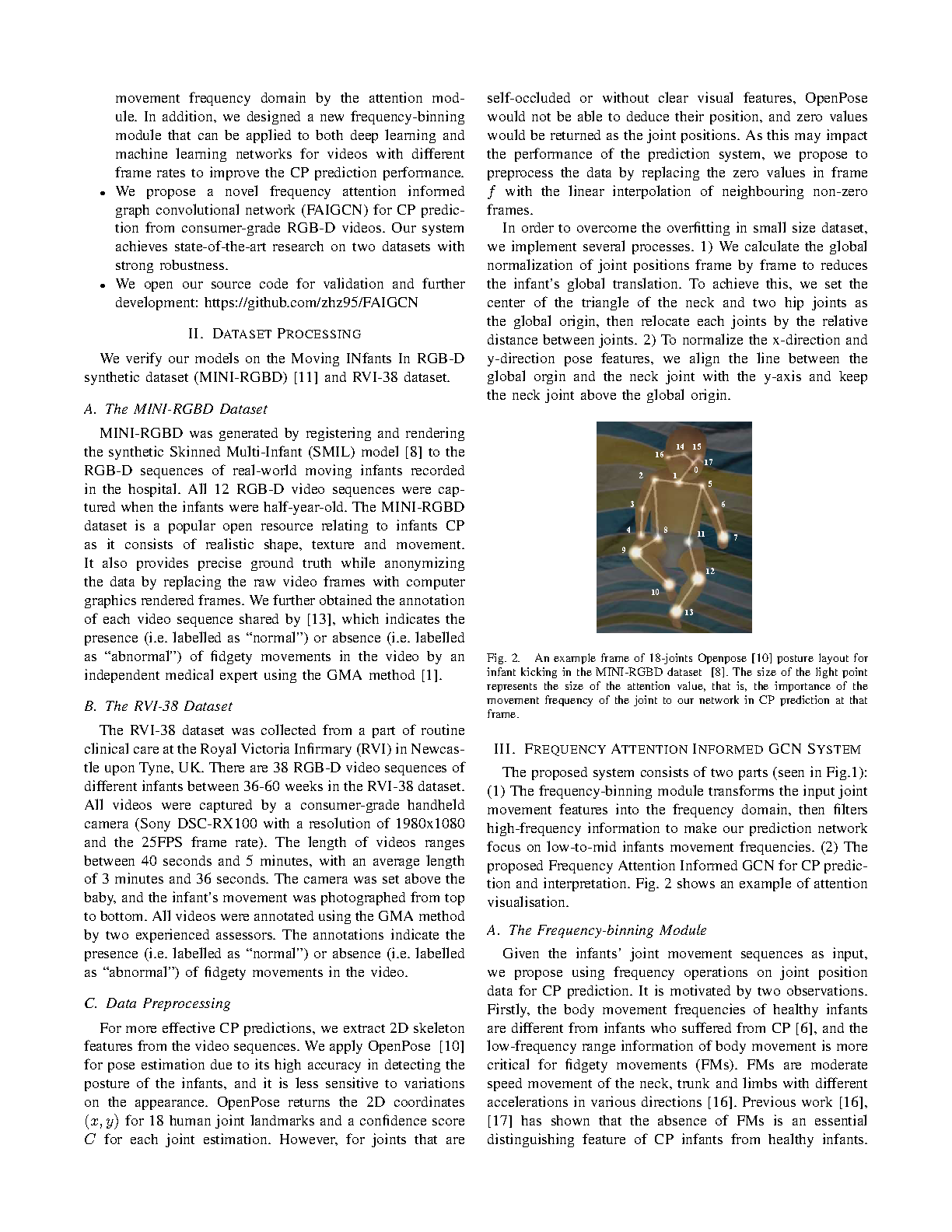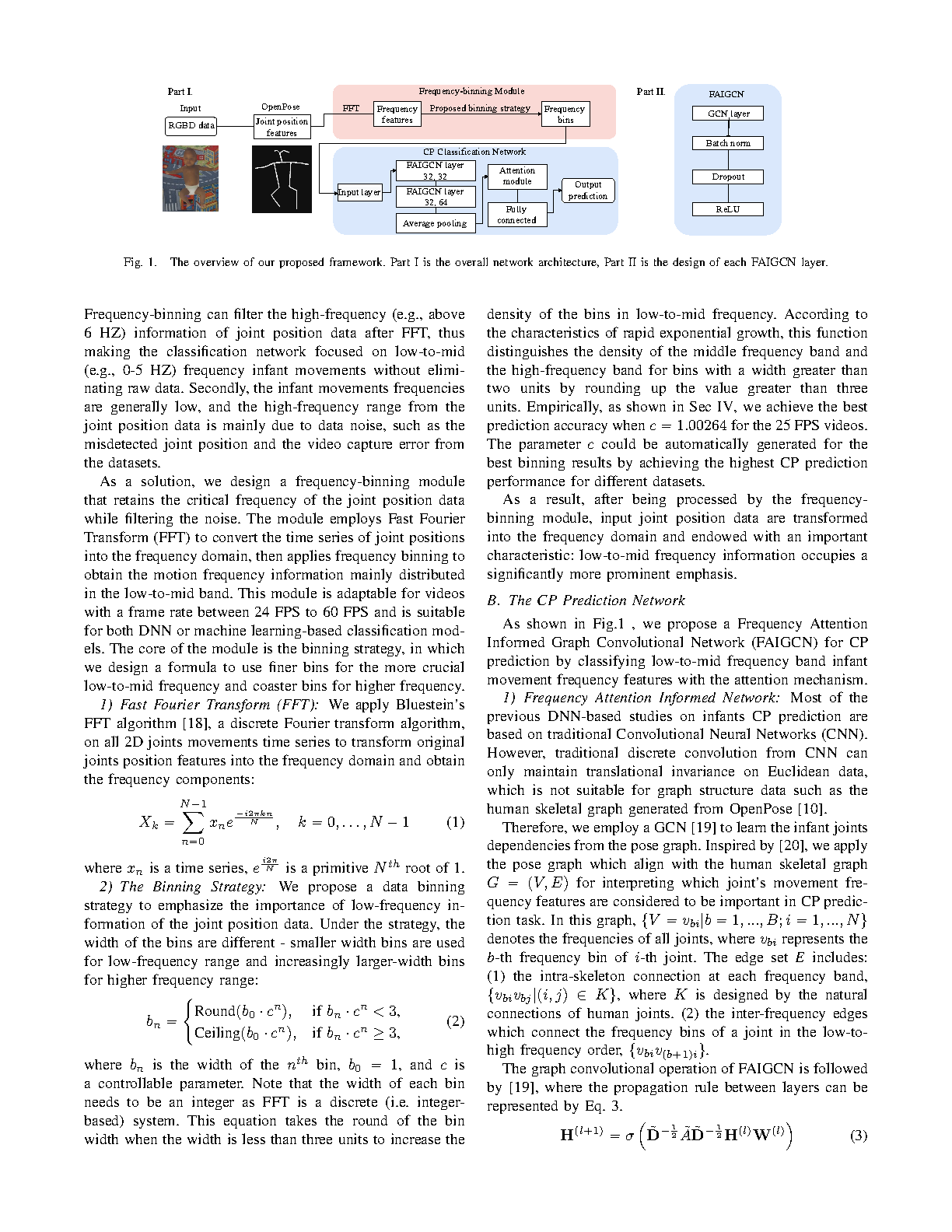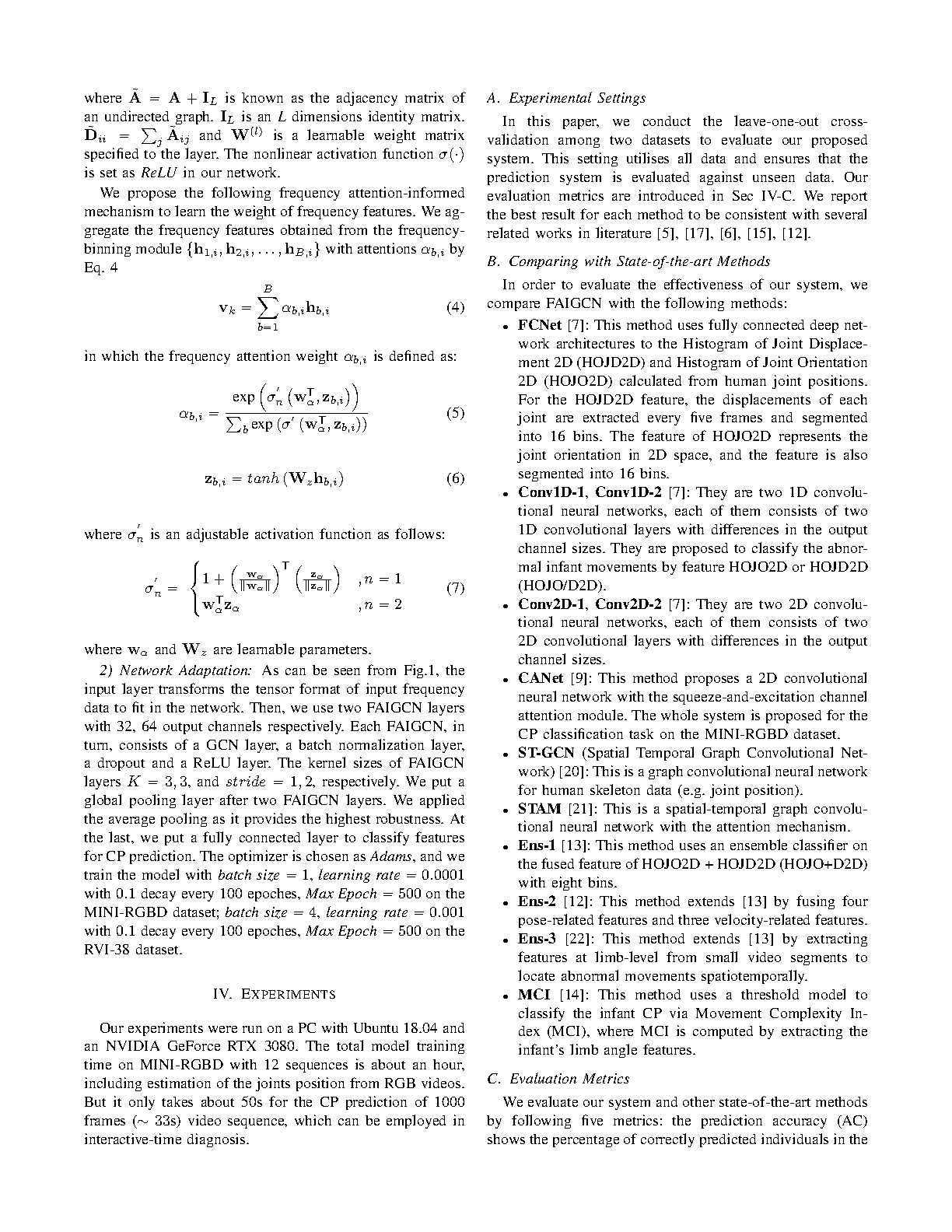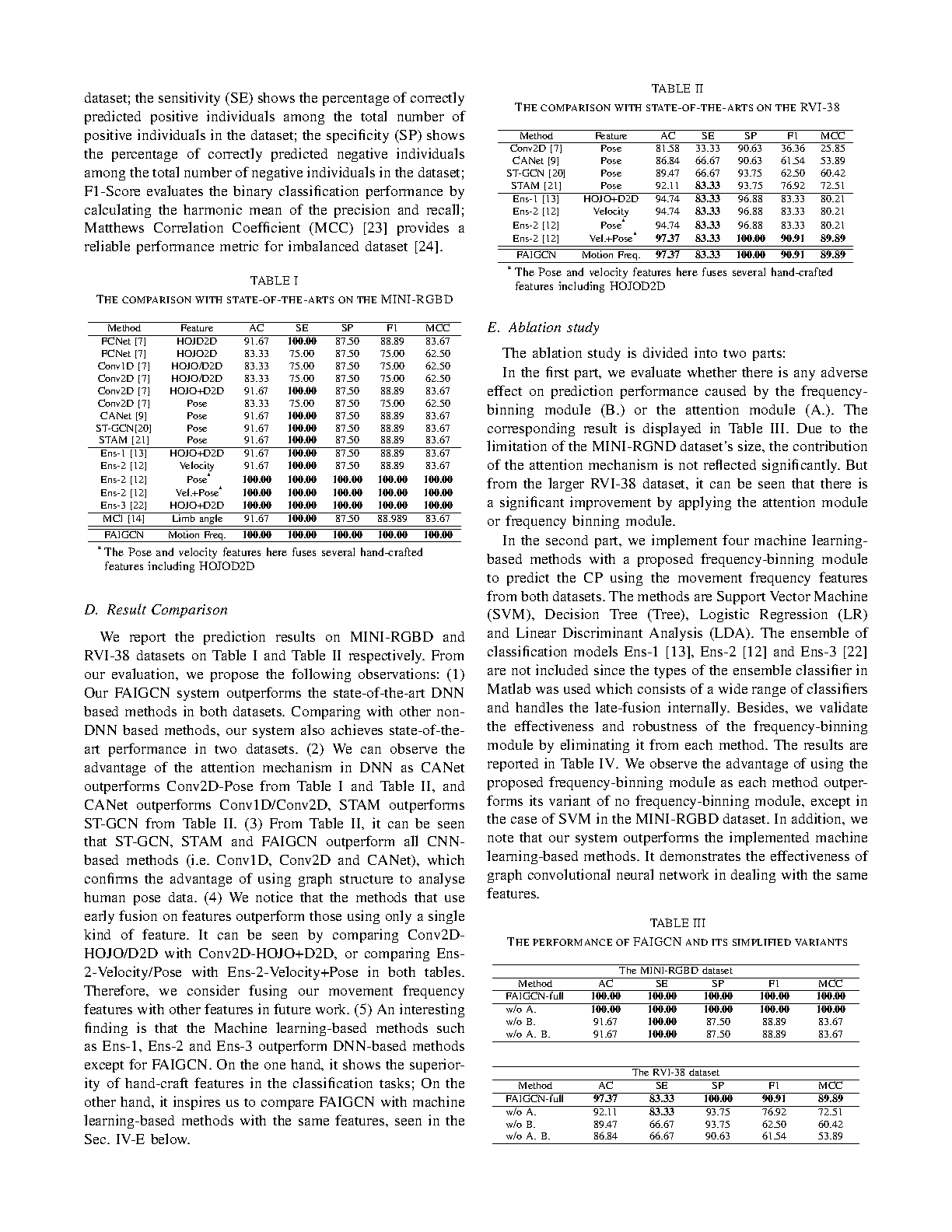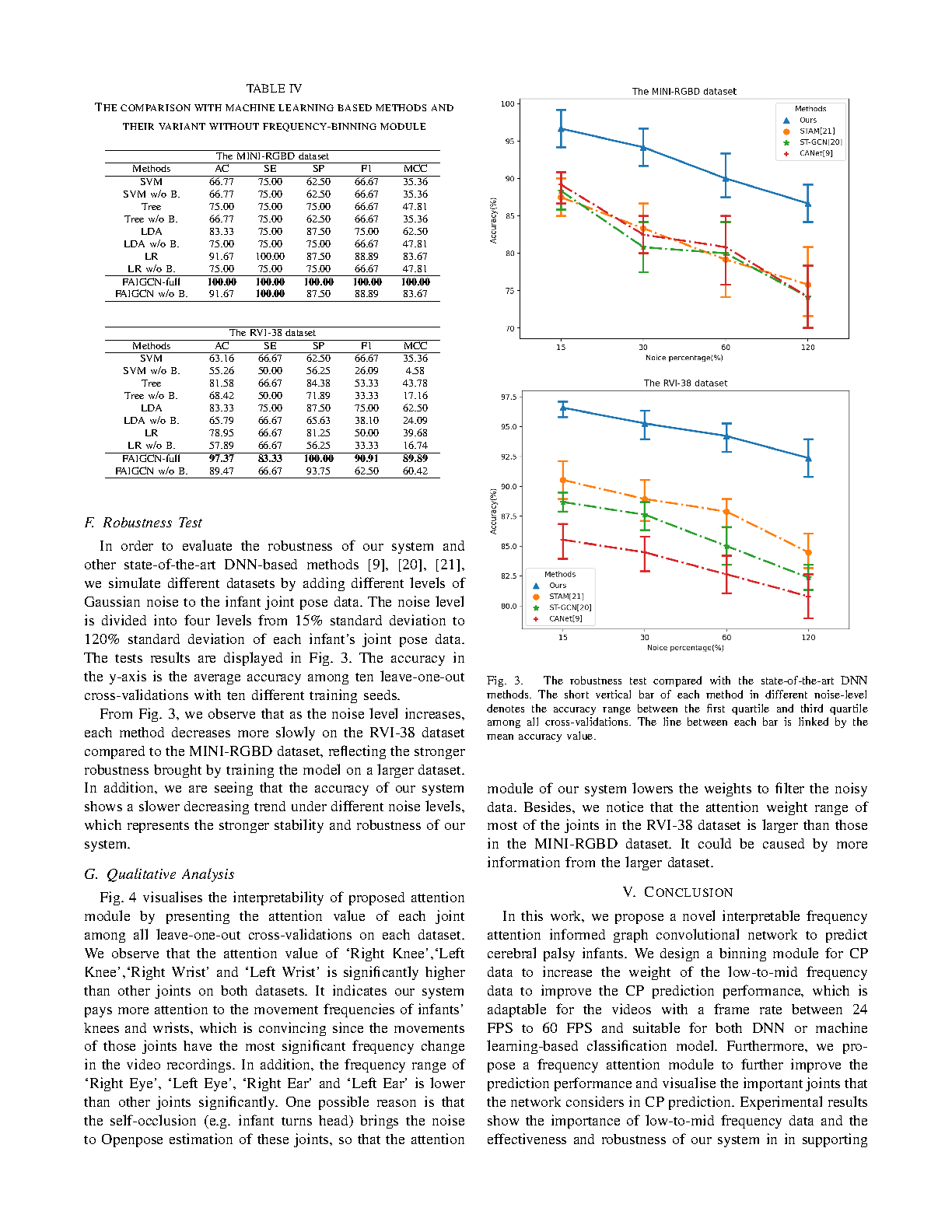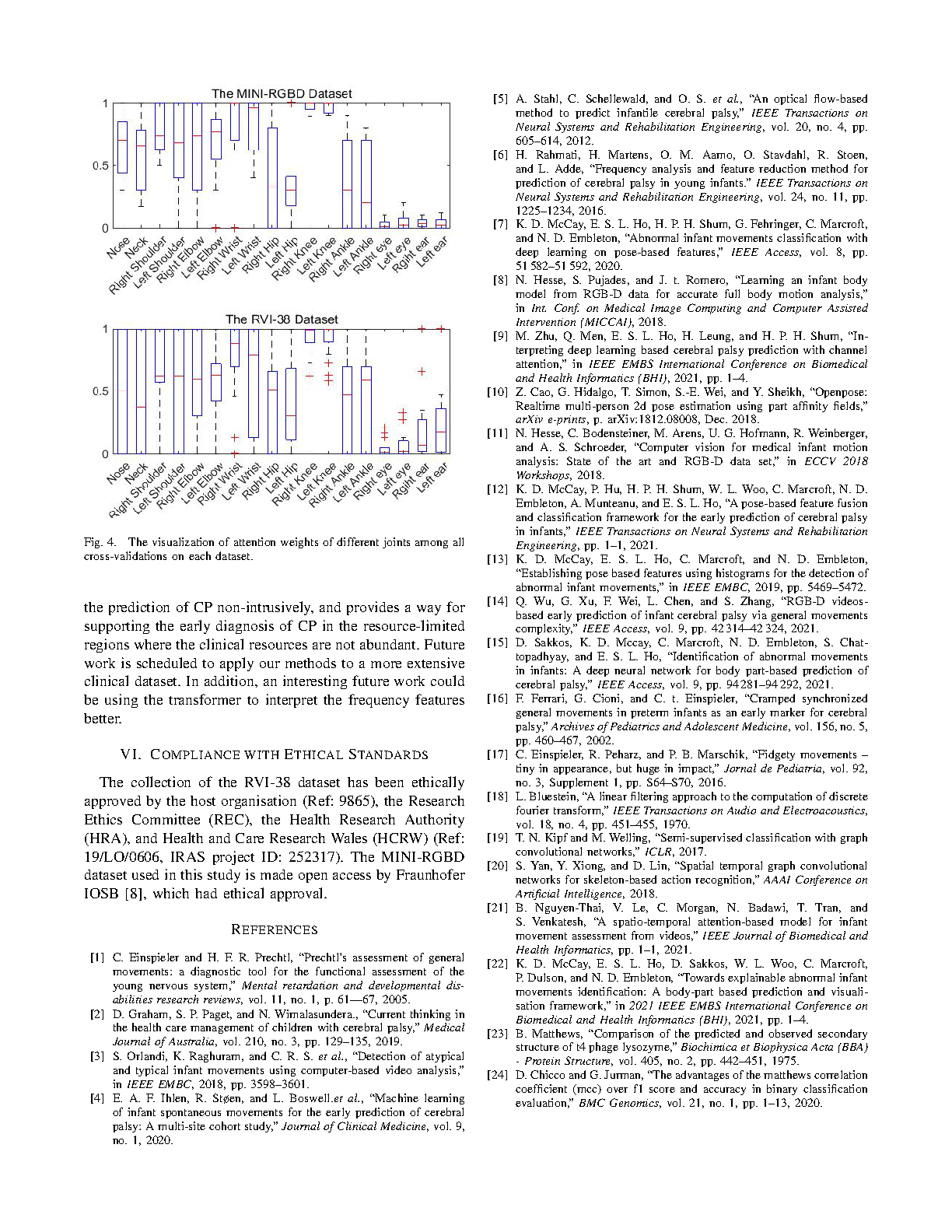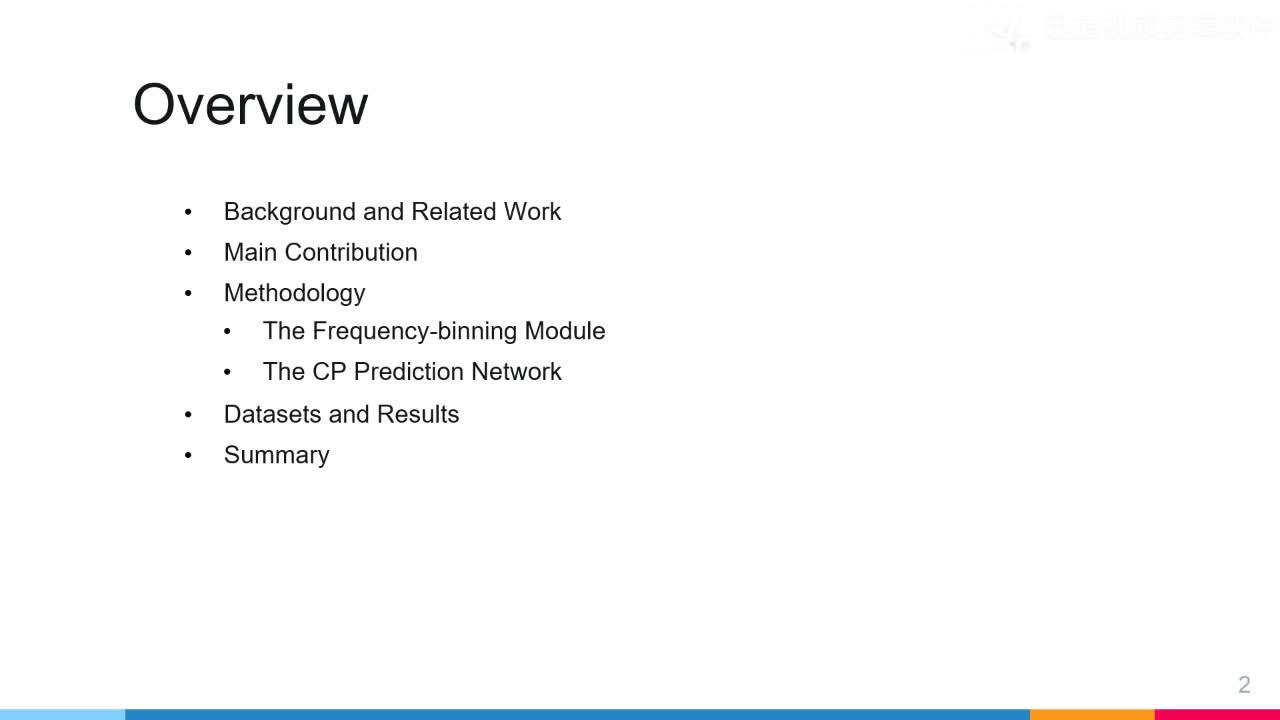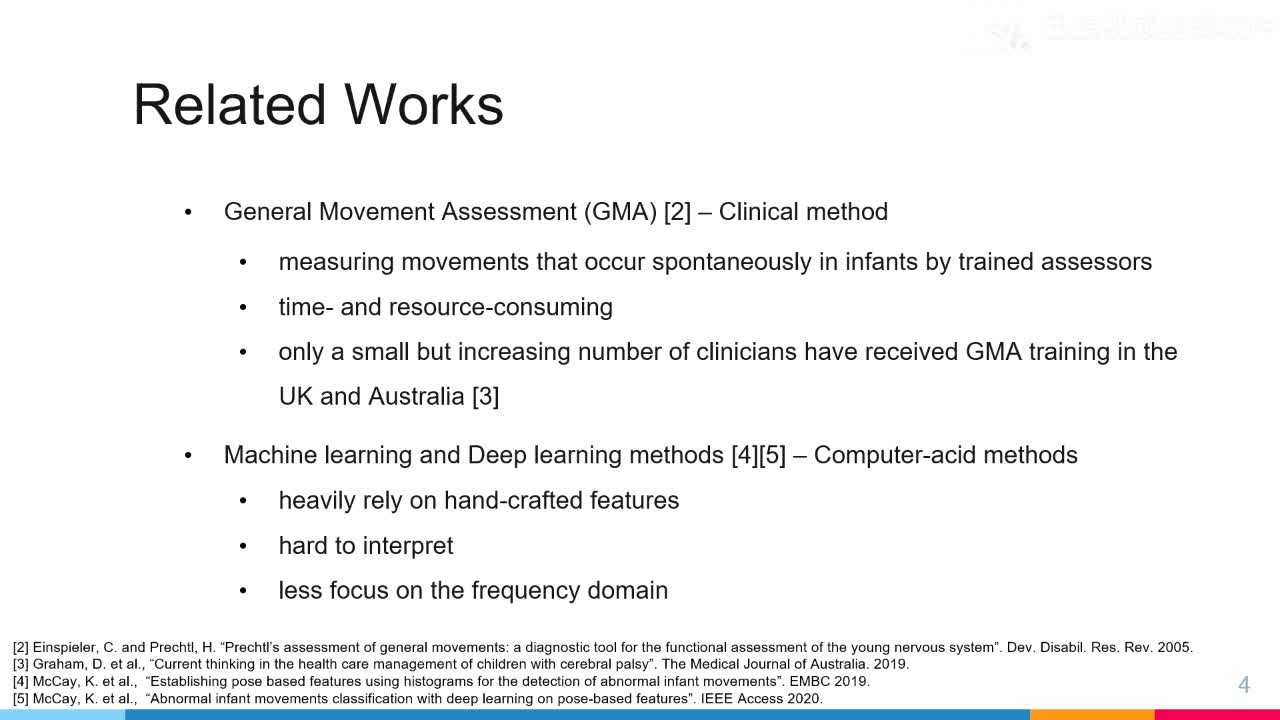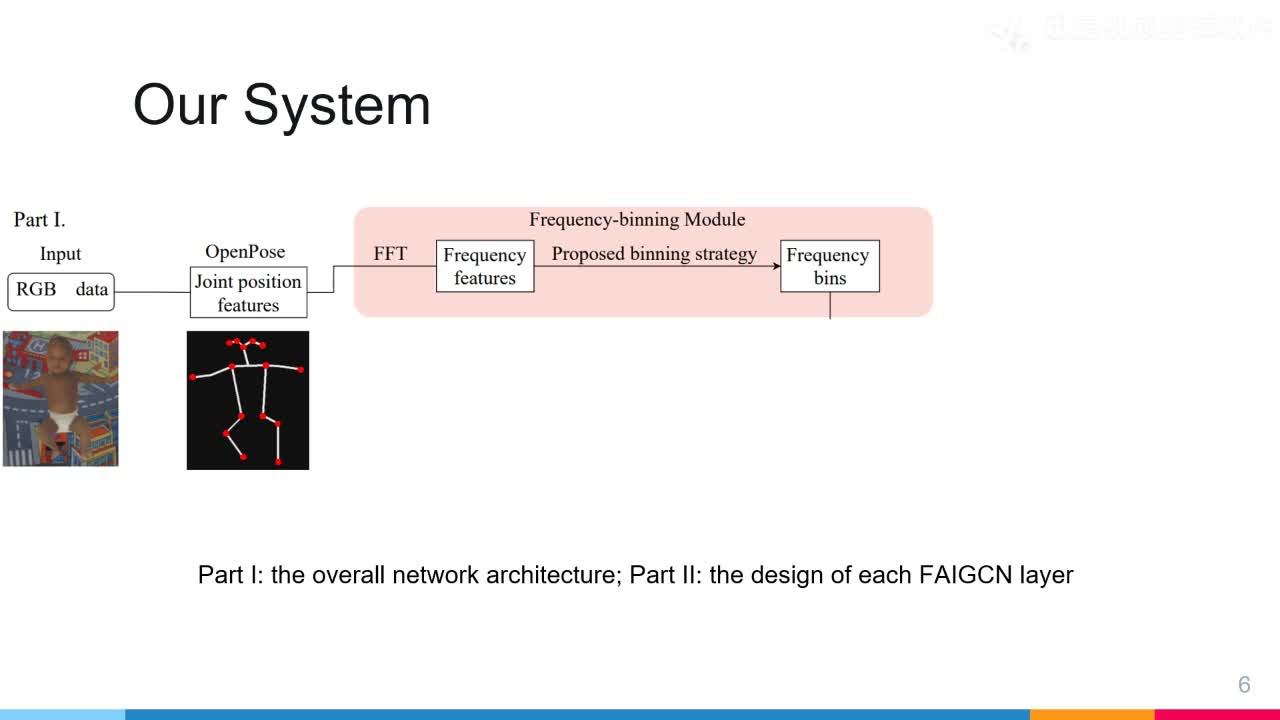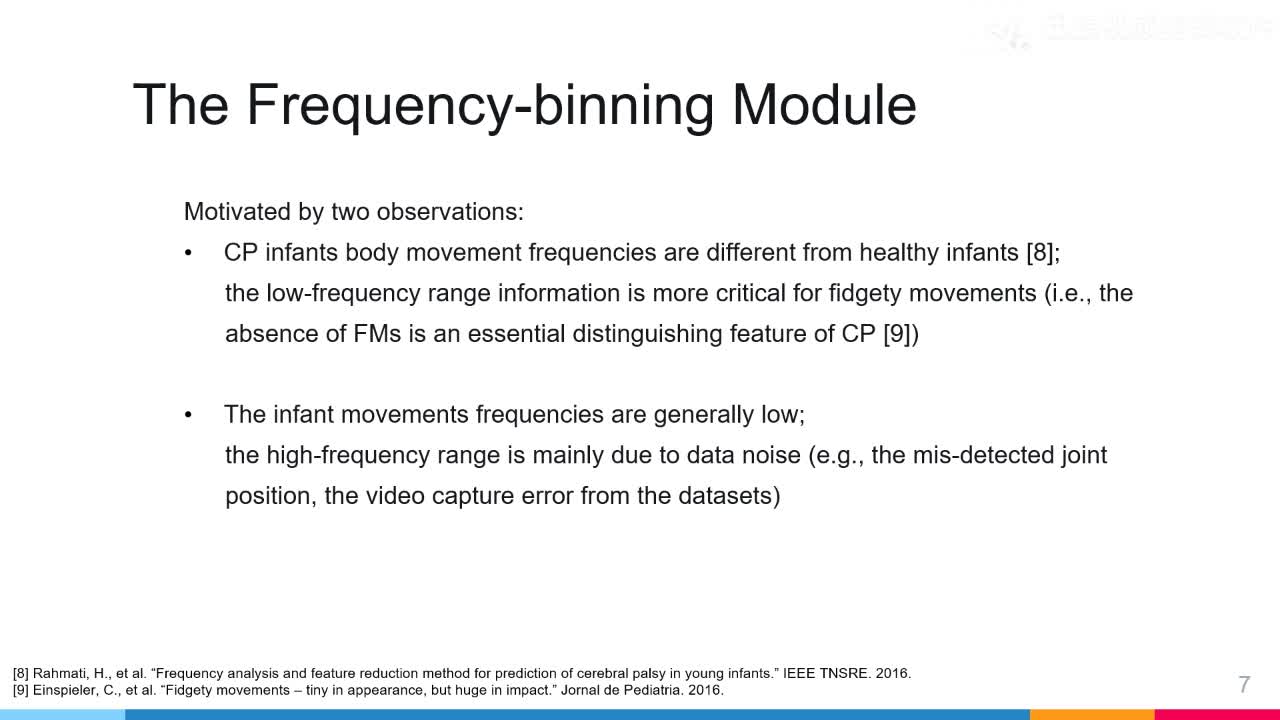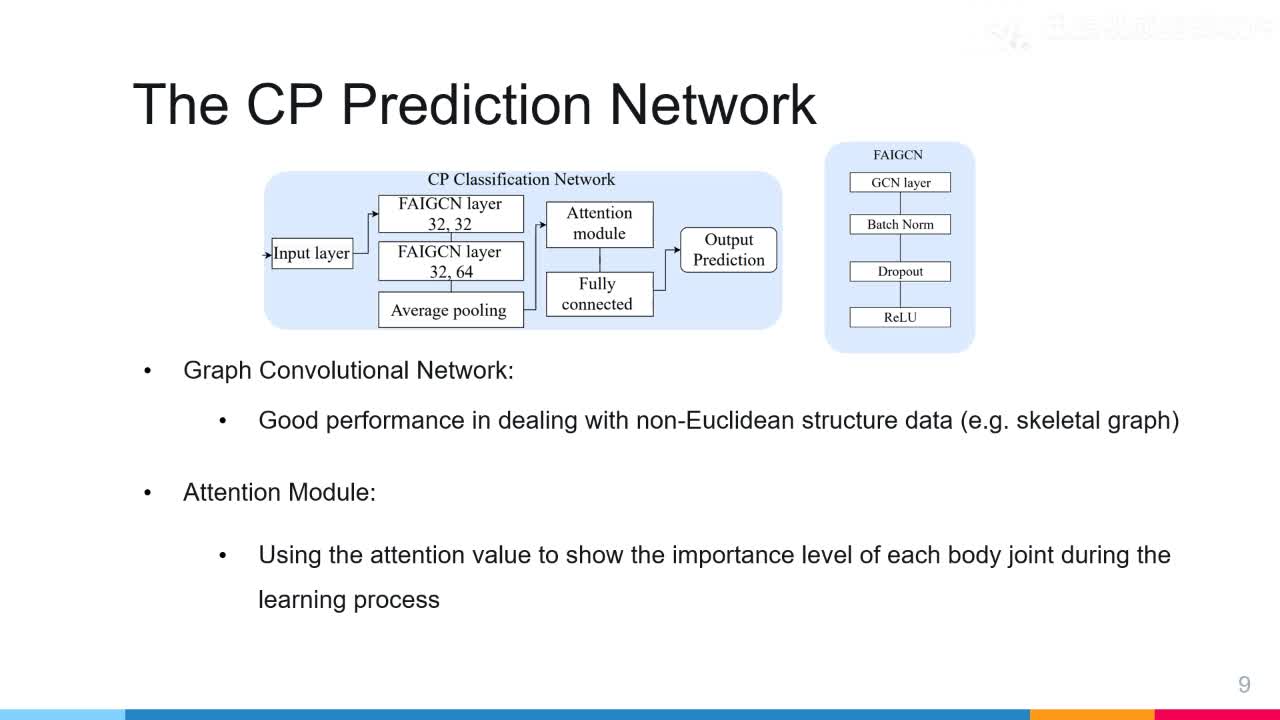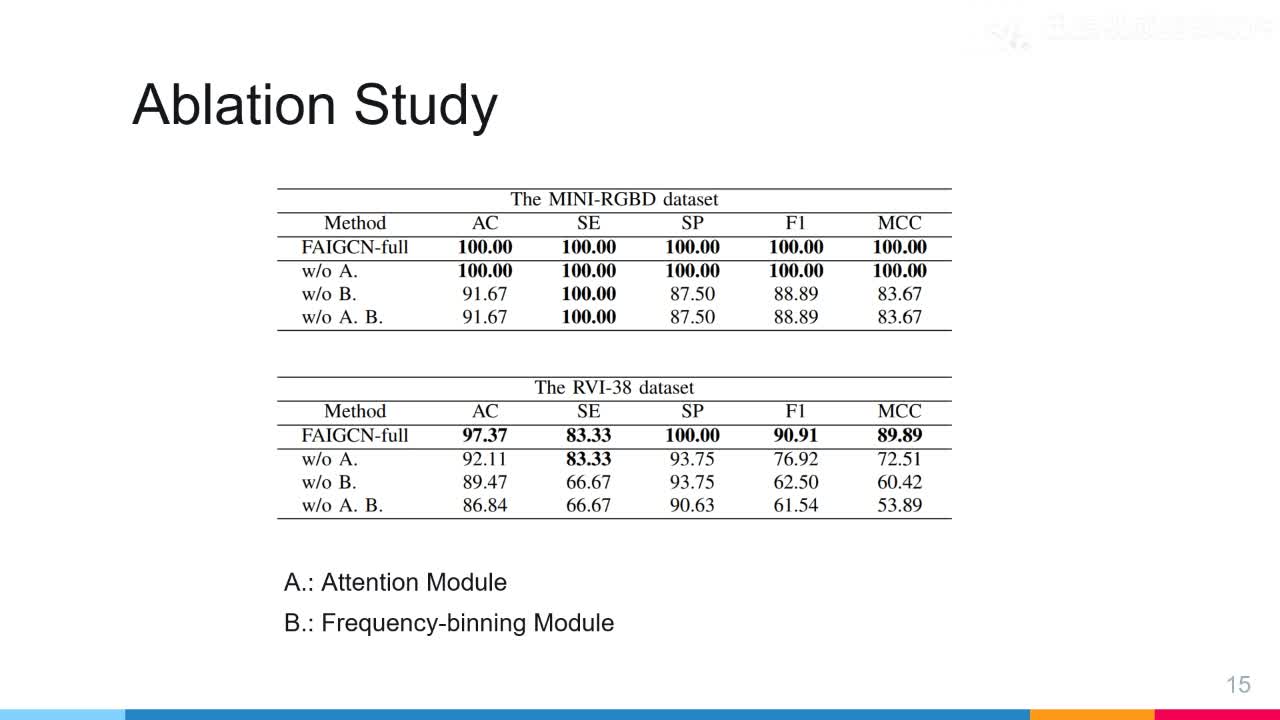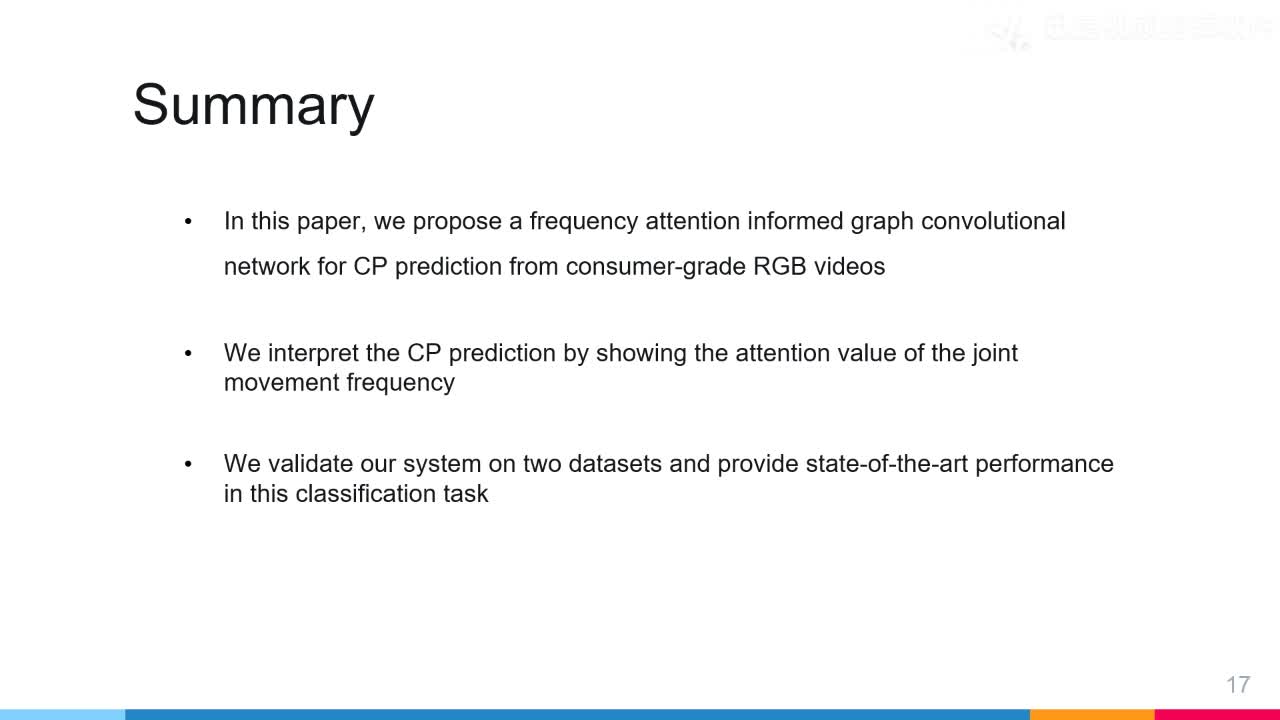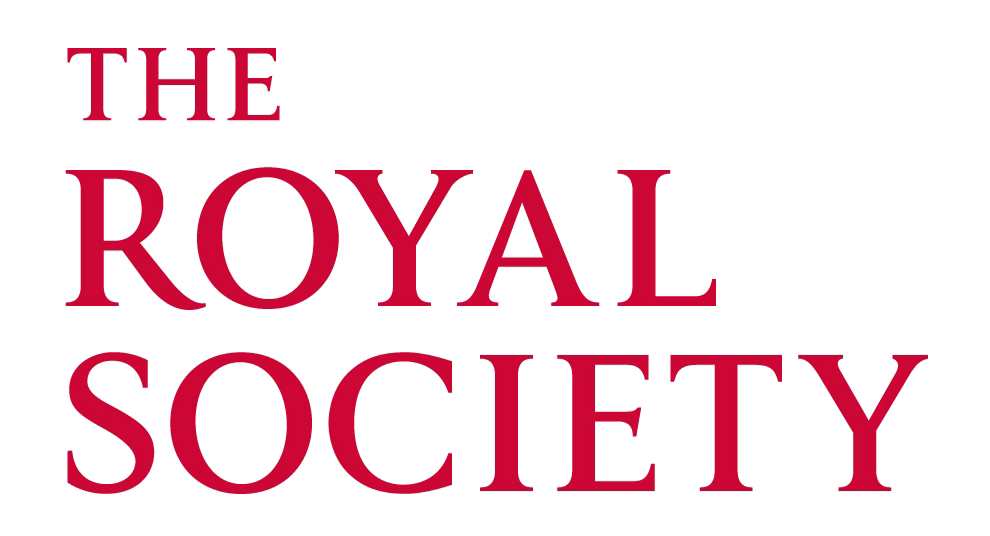Cerebral Palsy Prediction with Frequency Attention Informed Graph Convolutional Networks
Haozheng Zhang, Hubert P. H. Shum and Edmond S. L. Ho
Proceedings of the 2022 International Conference of the IEEE Engineering in Medicine and Biology Society (EMBC), 2022
Oral Paper Citation: 17#

Abstract
Early diagnosis and intervention are clinically considered the paramount part of treating cerebral palsy (CP), so it is essential to design an efficient and interpretable automatic prediction system for CP. We highlight a significant difference between CP infants’ frequency of human movement and that of the healthy group, which improves prediction performance. However, the existing deep learning-based methods did not use the frequency information of infants’ movement for CP prediction. This paper proposes a frequency attention informed graph convolutional network and validates it on two consumer-grade RGB video datasets, namely MINI-RGBD and RVI-38 datasets. Our proposed frequency attention module aids in improving both classification performance and system interpretability. In addition, we design a frequency-binning method that retains the critical frequency of the human joint position data while filtering the noise. Our prediction performance achieves state-of-the-art research on both datasets. Our work demonstrates the effectiveness of frequency information in supporting the prediction of CP non-intrusively and provides a way for supporting the early diagnosis of CP in the resource-limited regions where the clinical resources are not abundant.
YouTube
Cite This Research
Supporting Grants
Royal Society International Exchanges (Ref: IES\R1\191147): £11,940, Co-Applicant (PI: Dr Edmond S. L. Ho)
Received from The Royal Society, UK, 2019-2021
Project Page
